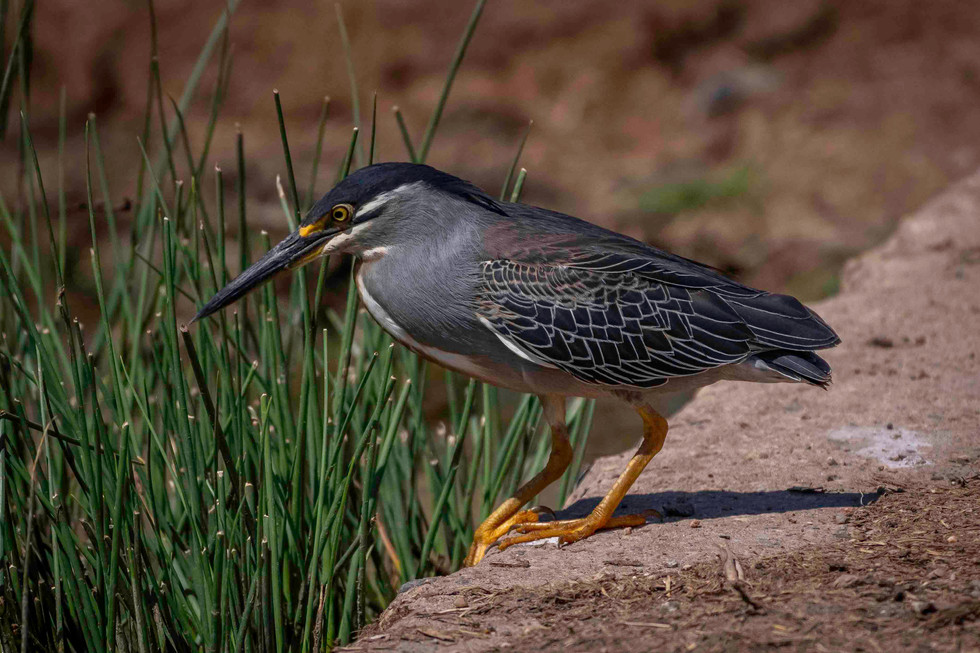7 Weeks in Kruger: Celebrating Critters!
- KrugerExplorer

- Nov 18, 2018
- 3 min read
Safari is often advertised as being all about the Big 5 or the cats, but that leaves out a huge amount! After sharing lots of sightings of predators and big herbivorous mammals in recent posts, I wanted to celebrate some of the smaller beasts of the bush that make for excellent and often unexpected sightings.
The diversity of animals within Kruger is one of the park’s incredible features. The areas around Mopani Rest Camp, and even the camp itself, are excellent for these sightings, with some of the local routes being excellent for birding.

A common species throughout the area is the southern yellow-billed hornbill, made famous by Zazu in the Lion King movie. Often seen in pairs, its manic calls, looping flight path and forever-busy foraging make for great entertainment.
Its nickname of "banana bird" is pretty easy to figure out too!
The Shipandani bird hide overlooks a section of the Tsendze River which is partially dammed by a low causeway, maintaining a decent quantity of water throughout dry season and supporting hippos, crocs and a variety of avian life.
I managed to catch this green-backed heron (formerly known as a striated heron) hunting for fish. The speed at which the neck is extended and a fish taken is simply incredible. The middle photo below is a 1/8000th of a second exposure and it still isn’t completely sharp - I’m not sure there is a camera on the general market that will shoot any quicker!
Look closely at the third picture too - a tiny fish was indeed snatched from the water.
It proved a bad afternoon for the local fish... This African darter also caught a good sized one, harpooning it on its bill before flipping it up into the air and swallowing the poor thing whole! It’s hard to understand how the darter didn’t suffocate with the fish clogging up its throat.

Curiously, there was a random bird egg on the sand (bottom right) next to the darter…! It was still there the following day so quite what left it unprotected and why none of the nearby crocodiles ate it I really cannot explain. Any bird egg experts reading - please do let us know what species may have laid it!

Not all critters are welcome in Kruger. This is a common myna and it is not indigenous to Africa. They were brought to Durban by immigrant settlers from India in the 1800s and have become a pest in cities and now nature reserves where it aggressively out-competes other local species.
I saw a pair of myna at Stapelkop Dam and reported the sighting to the Section Ranger when I saw him in the rest camp. It was interesting to see how it was dealt with as a genuine emergency, with a truck of guys immediately sent to the dam to locate the bird and ‘discourage’ it from remaining in Kruger. A sad end for the individual birds but a necessary and important piece of ecological management.
An unusual mammalian encounter near Mopani was this huge scrub hare. They are extremely common in the park but they are nocturnal and very skittish so to see one several hours before sunset and have him pose for a photo was most unexpected!

A beautiful sighting to finish this post off - a pair of African paradise flycatchers. They are tiny little things but are vibrantly coloured and the male develops this stunning forked tail plumage when in breeding. As the name suggests, they eat flies and so are very speedy and rarely sit still so I was extremely pleased to get these snaps!
So safari is not just about the Big 5 and huge predators and herbivores - the diversity of wildlife in Kruger is incredible and provides repeat visitors with a lifetime of animals to discover.
My next stop is the Letaba Rest Camp and the first perennial river I’ll have seen since the far north - which means lots of thirsty animals being stalked by lots of hungry predators…
You can add your email address to the Learn More page of our website to get updates on blog posts too - we’d be delighted to have you follow our adventure!
Danny
Find out about and follow our KrugerExplorer App project at:
www.krugerexplorer.com
www.krugerexplorer.com/blog
www.instagram.com/krugerexplorer
www.facebook.com/krugerexplorer














Thanks Tracy! A mix of patience, planning and luck all helps...! :-)
Fantastic photos once more. You must have incredible patience to wait for the perfect shot!